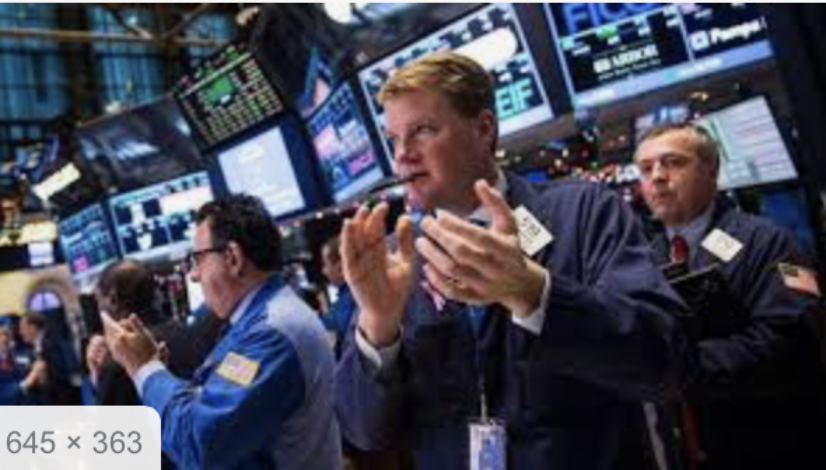Desperate Democrats badmouth economy even as it booms

Who are you going to believe? Democrats badmouthing the economy or your own eyes?
Former Vice President Joe Biden says, “The American people are getting clobbered.” But middle-class incomes are up $5,000 since President Trumpwas elected, wages for the average worker are rising at the fastest rate in a decade and more good news is surfacing that makes Biden’s claims look foolish.
Here’s what the booming stock market is telling us: The U.S. economy will accelerate as we head to the 2020 election.
That’s great news for President Trump, and a terrible prospect for Democrats. And it sure doesn’t please the liberal media one little bit.
On January 4, the New York Times reported: “U.S. Manufacturing Has Slumped to a Decade Low.” It’s a shocking headline (now taken down), and utterly misleading. The piece says that the Institute of Supply Management Index fell in December to the lowest level since 2009. But that index measures sentiment, not output. The reality is that December industrial production was up 21 percent versus a decade ago, according to the Fed.
The bigger reality is that “U.S. consumer confidence advanced last week to the highest level in more than 19 years,” and that optimism is key to continued expansion.
That’s from Bloomberg’s report on its “consumer comfort” survey, which climbed recently to a level last seen in October 2000. In addition, the survey showed Americans’ view of the economy was rosier than at any time since 2001.
Of course, Bloomberg, which is owned by Democratic presidential candidate Mike Bloomberg, followed this cheering news with another report sub-headlined: “Economists expect slower U.S. growth in 2020 election year,” and quotes a PIMCO economist projecting growth of only 1 percent in the first half of this year. The story acknowledges that Joachim Fels’ projection is “one of the more pessimistic forecasters out there,” but of course that’s the one highlighted.
There are three reasons that growth in 2020 could come in higher than expected:
- The signings of USMCA and “Phase One” of a trade agreement with China relieve considerable uncertainty for manufacturers and retailers. USMCA, the updated NAFTA, is helpful to various industries; the China pact is more comprehensive than expected, and includes meaningful enforcement mechanisms, including the possibility of tariff “snap-backs,” which will help prompt Chinese compliance.
- Homebuilding is beginning to surge.
- The U.S. consumer remains upbeat and completely indifferent to the impeachment drama, which seems to be occupying the minds mainly of pundits and politicians.
The liberal news media is in despair, knowing that President Trump’s reelection prospects are bolstered by the strong economy. They are, for instance, quick to disparage the China trade deal. After warning for two years that Trump’s tariff spat with China would smack American consumers with higher costs (which never happened) and would derail businesses, those same analysts now suggest that resolution of the dispute counts for nothing.
In fact, the China agreement should provide businesses with greater clarity going forward. It also requires that China step up its U.S. imports by roughly $77 billion this year and $123 billion in 2021. White House economic adviser Larry Kudlow has predicted the deal will boost U.S. GDP by one half of one percent.
Critics complain that substantial U.S. tariffs on Chinese goods remain in place. It should be noted that at the outset of our battle with China, Secretary of Commerce Wilbur Ross wrote a compelling op-ed showing that China’s tariffs were substantially higher than ours on 20 of 22 major categories of goods. Some of the levies placed on Chinese imports were meant to level the playing field, and may well remain in place.
The president is to be congratulated for forcing Beijing to the table and exposing to the world the thievery that has propelled China’s ascent. Confronting China, as Trump has said, should have happened a decade ago.
Meanwhile, the homebuilding industry appears set for an upturn, encouraged by low mortgage rates and robust household formations. Housing starts popped nearly 17 percent in December, to 1.608 million units, the highest since 2006. That starts figure, which was up nearly 41 percent compared to the year before, may have been juiced by warm weather. But the surge vastly outperformed economists’ expectations of 1.375 million units.
Homebuilder sentiment is the highest it has been since 1999; they see what’s ahead.
Housing is not the only sector boosted by optimistic U.S. consumers. Retail sales for December mark the mood, up 0.3 percent over November’s strong level, which was revised higher, and up nearly 6 percent year-over-year. Consumer sentiment remains near-record highs since the financial crisis, in spite of the “sad and somber” impeachment driven by the “prayerful” Nancy Pelosi. In fact, the University of Michigan, reporting on its latest survey, noted that only 1 percent of respondents mentioned impeachment.
These are just a few of the positive trends boosting our markets and our prospects. It’s also important that new business formations are picking up. The latest read from the Census Bureau shows applications jumped 3.4 percent in the further quarter over the prior three months. That’s what optimism will do.
Our economy is growing faster than that of any other developed country, spurred by a pro-business administration in the White House, lower taxes and reduced regulations. The successes have led the stock market to new highs, and created trillions of dollars in new wealth for Americans, which helps everyone. JP Morgan recently surveyed CEOs and found 76 percent were optimistic about their businesses in 2020, even as they were concerned about finding good hires and managing labor costs.
Any minute the liberal media will start warning about rising inflation, as wages move up. Don’t be fooled; that will be good news, and it is coming.
Published on The Hill




